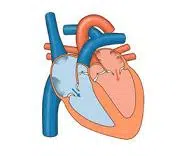The term diastole that concerns us now can be established that it has its etymological origin in Greek. Specifically, it comes from the word "diastolé", which can be translated as "dilation".
The concept is used to refer to the movement made by the heart when it relaxes so that blood enters its cavity.
 It is possible to distinguish between atrial diastole (which allows the atria to relax) and ventricular diastole (which relaxes the ventricles). Both make up cardiac diastole , known simply as diastole.
It is possible to distinguish between atrial diastole (which allows the atria to relax) and ventricular diastole (which relaxes the ventricles). Both make up cardiac diastole , known simply as diastole.
The sequence of activities that allows the heart to pump blood is known as the cardiac cycle . The process begins with systole , which is the contraction of the heart to expel blood. Then, with diastole, blood enters the organ .
It is important to keep in mind that the blood ejected from the heart in systole does not return to the atria thanks to the closure of the bicuspid and tricuspid valves . This blood passes to the pulmonary arteries, which take it to the lung for oxygenation. The already oxygenated blood, for its part, enters the heart through the left atrium thanks to diastole and, after passing to the left ventricle , it is sent to the rest of the body through the aorta artery.
To all of the above, it is interesting to add the fact that while in an adult the measurement of the diastolic session is 80 mmHg, millimeters of mercury, in the systolic session the same is 120 mmHg. In the case of a child, aged between 6 and 9 years, the recommended diastolic pressure is 65 mmHg and the systolic pressure is 100 mmHg.
Other differences between diastole and systole are the following:
-In diastole blood pressure is low and in systole it is high.
-While in diastole the blood vessels are relaxed, in systole they are contracted.
Diastole is also called a literary figure whose application depends on the characteristics of the language . In Spanish, diastole consists of delaying the stress of one syllable, passing it to the next, with the intention of achieving a certain rhyme.
A perfect example of diastole is this fragment of a work by the writer Luis de Góngora that says:
«The count, my Lord, is going to Naples
And the Duke, my Lord, is going to France
Majesties, your grace, because this day
"I will give grief to some snails."
Not to mention that we also find it in current songs such as, for example, in the "Rose of the Winds" by the Spanish rock band Mago de Oz.
It is also important to know other aspects related to this literary diastole, such as the following:
-It also responds to the name of ectasis.
-It was used very commonly in Latin.
Diastole, in this framework, is part of the set of figures of speech , more precisely of the metaplasm (which involves a modification of the pronunciation or writing of words without changing their meaning ).
